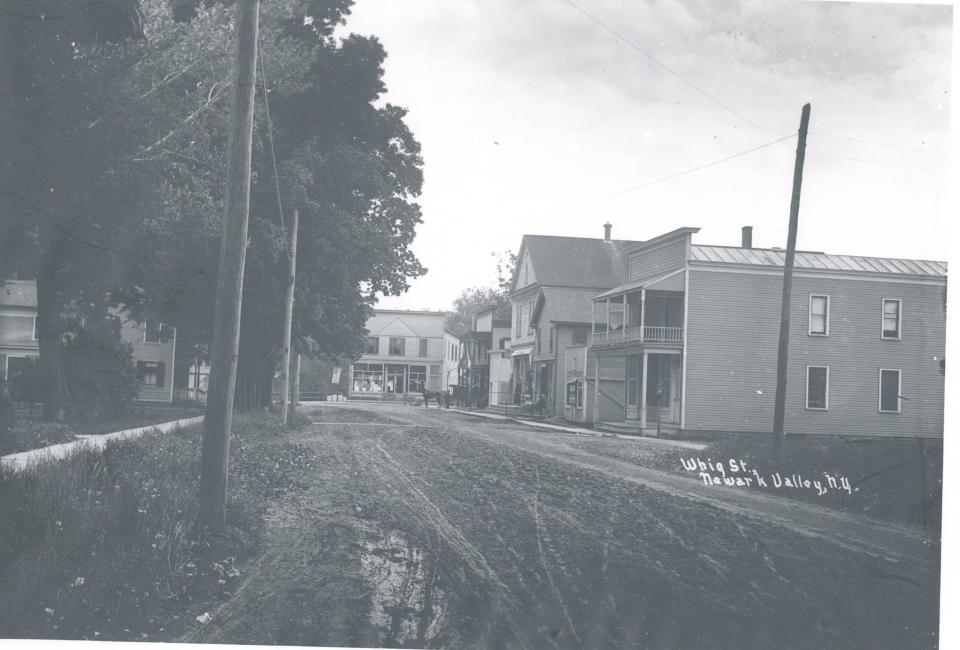Spanning Time: The ill-fated story of a Newark Valley factory
There are times when an idea is neither good, nor bad – just not thought out.
This all relates to a small company that began in January 1900 in the community of Newark Valley in Tioga County. That community had long been the home to a tannery which had recently closed.
It left a large dent in the industrial sector of the area. Several leading citizens and investors learned that the Sayre Lumber Company was organizing and building and equipping canning companies.
After a short time, the head of the lumber company and the village president agreed that Newark Valley had the potential to be a profitable venture, and a cooperative company was formed with $10,000 as the capital stock. A wooden factory building was erected on Whig Street and equipped for a total of $7,900 with the investment money sufficient to pay back the Sayre Lumber Company.

In February 1900, Charles Frank, Charles Baynes, and M.W. Bakeman formed a committee to examine the successful operations of other canning companies and to work with area farmers to supply vegetables to can.
1900 had been a poor year to start as many crops had not performed well during that period. Nevertheless, the effort continued with nine men elected as the board of directors and a total investment of $9,000. Stephen Siegart of Rome, New York was chosen as the processor for the factory at a salary of $900 a year. The building was completed in July 1900 and the firm was underway.
I would like to say that this venture was a big success. I would like to say it, but I cannot.

There were a couple of good years, and several that were not so good. Part of the problem was in having a good supply of whatever was being canned. That supply greatly varied, as did the product that was being canned.
Those products ranged from corn to beans to many varieties of fruits and vegetables. When the yield was high, the company had a decent year. The down years, however, took their toll.
Perhaps part of the equation was that there were many successful canners operating in the Mohawk Valley section of New York. The success of those firms seems to have an inverse effect of the Newark Valley Canning Factory. Only so much of any one type of product could be both canned and sold to allow profit for the firm.
Perhaps another reason happened sometime in the five years that the firm was operating. According to one newspaper article, Professor Quance played a significant role in one rather humorous episode. This writer was unsure of the veracity of the story, but a little research resulted in the answer.

Professor Quance was likely Joseph E. Quance from Wayne County in New York State. His father, Jarvis, was a respected canning factory processor for many years and had “retired” to Wolcott in Wayne County. Young Joseph Quance, who had some canning knowledge, came to the Newark Valley company and offered to turn dry beans into canned baked beans.
He put 40 metal cans of beans into the oven of his home kitchen range. In a little while, when the heat reached its height, there was a tremendous explosion that shook the house, and left the kitchen full of beans, tin cans and scraps of metal from the remains of the range.
Young “Professor” Quance went back to his home in Wayne County, and continued to work in a canning factory, passing away in 1955. After five years of rising debts, though, and the loss of funds, the stockholders closed the factory. Once again, a manufacturing part of the Newark Valley economy was lost.
More: This Binghamton lawyer and U.S. magistrate rode her horse to work on Hawley Street
The plant remained closed, but the building stayed. For many years, the property on Whig Street has been owned by Bert Bliss. The largest portion of that structure became the facility to house the buses owned by the Newark Valley School District. At least a good use for the wooden factory was found and continued to play an important role for the community.
Now if Mr. Quance could just scrap off all those beans from his kitchen wall.
Gerald Smith is executive director of the Tioga County Historical Society and a former Broome County historian. Email him at historysmiths@stny.rr.com.
This article originally appeared on Binghamton Press & Sun-Bulletin: Spanning Time: The ill-fated story of a Newark Valley factory

